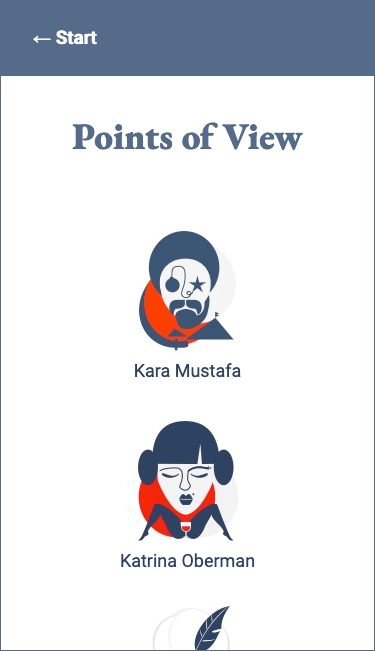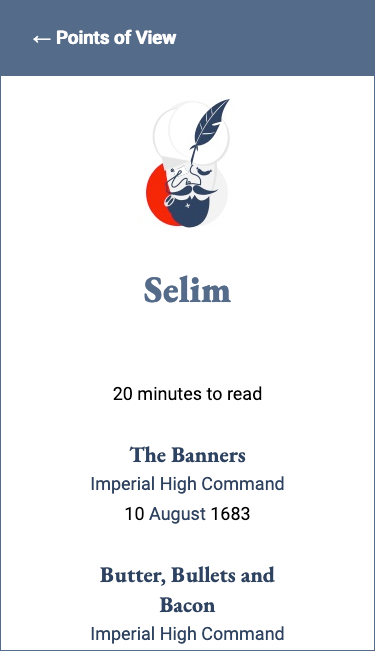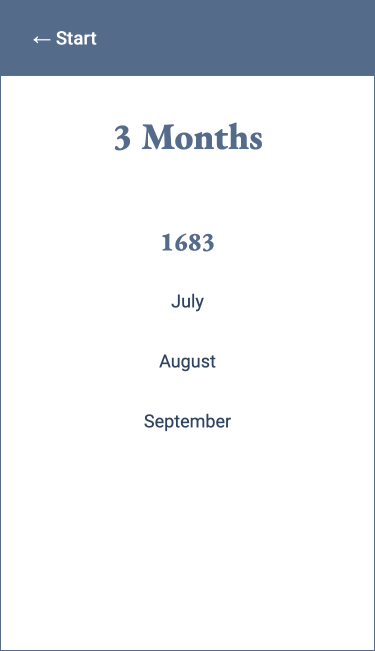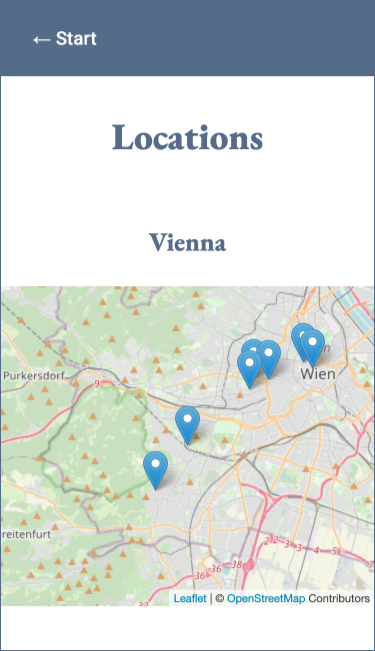The Gates of Vienna

Update! Bastion, the book building CMS that once housed The Gates of Vienna has been pulled from the iOS App Store. It’s been a long hard slog and the App Store is a non-stop battle I can’t fight anymore. Instead I’ve liberated the story and the format from the cold, cruel claws of the App Store and it’s now a fully open and free web app and actually going to have expanded stories and characters. The whole enchillada and kit and kaboodle. Watch this space.
The #1 Siege Comedy of 2017 and 2018!
The Gates of Vienna is an comedy app-novel about the 1683 Ottoman Siege of Vienna written and designed to be navigated in different ways and read in about 15 minutes at a time
…by who’s doing what
…or by when things were happening to whom
…and by where what was happening








Vienna, 1683
After months of laying siege to the city, Kara Mustafa, Grand Vizier of the Ottoman Empire, is still struggling to find a way to finally take it – in a civilised manner, of course. Meanwhile, Austrian village girl Katrina Obermann is no less ambitious as she starts her new life of slavery; Selim the scribe has had it up to here with the Vizier and his idiotic ideas; Franz the Viennese baker’s surreptitious assault on the Ottoman camp is taking shape – literally; and foot-soldier Murad, son of Murad, is hungover, and not in the mood for any final assault bullshit at all.
The Gates of Vienna is about designing a new way of reading fiction and novels for today’s mobile-aided and addled lives. Novels were created at a time when people read very differently from how they do today: reading novels and more involved works of fiction shouldn’t have to require sitting for hours, in need of continuous attention. And that’s where this way of reading comes in.
Linear progression is out, and it’s up to the reader to choose whether to read about the character, time or place instead. The author no longer insists: the reader decides. And all in simple, bite-sized chunks.
What it used to look like and how it worked on iOS previously.
